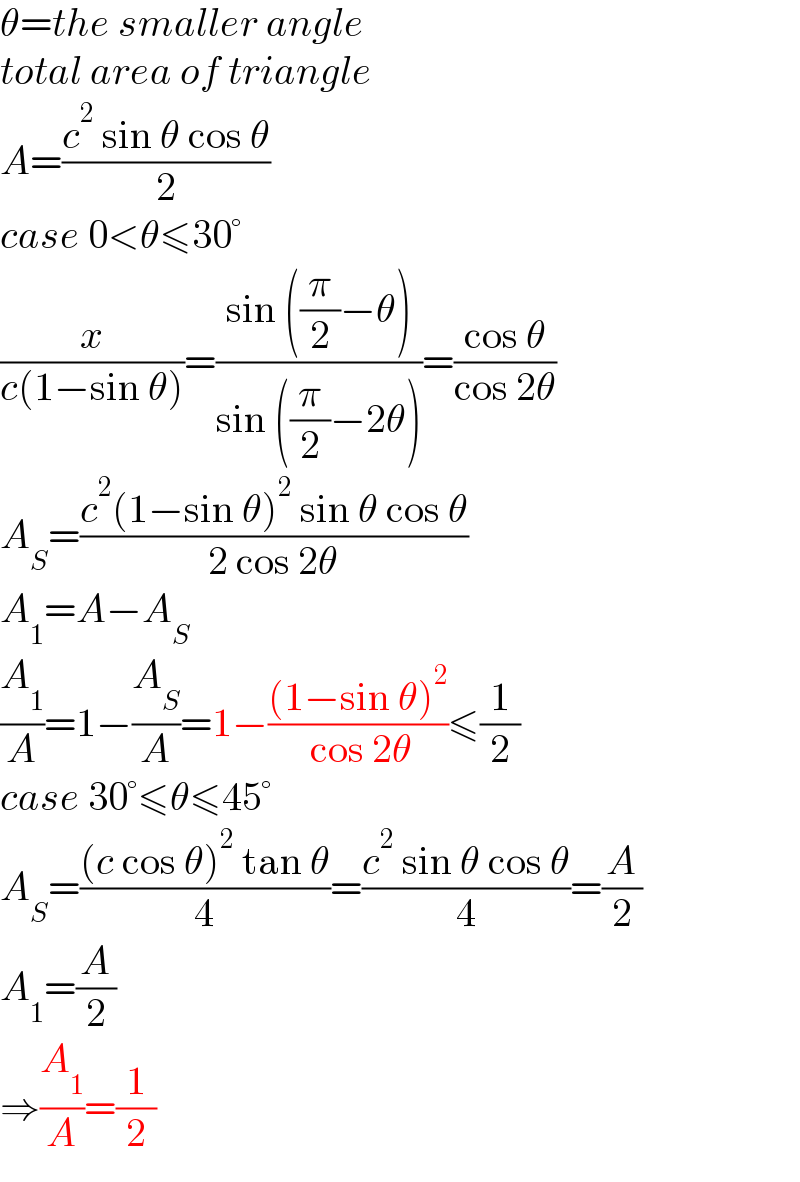
Question and Answers Forum
Question Number 186111 by Rupesh123 last updated on 01/Feb/23

Commented by Rupesh123 last updated on 01/Feb/23
A right angle is rotated and translated as shown in the diagram
Commented by mr W last updated on 01/Feb/23

Answered by HeferH last updated on 01/Feb/23

Commented by HeferH last updated on 01/Feb/23

Commented by HeferH last updated on 01/Feb/23

Commented by mr W last updated on 01/Feb/23

Answered by mr W last updated on 01/Feb/23

Commented by mr W last updated on 01/Feb/23

Commented by mr W last updated on 01/Feb/23

